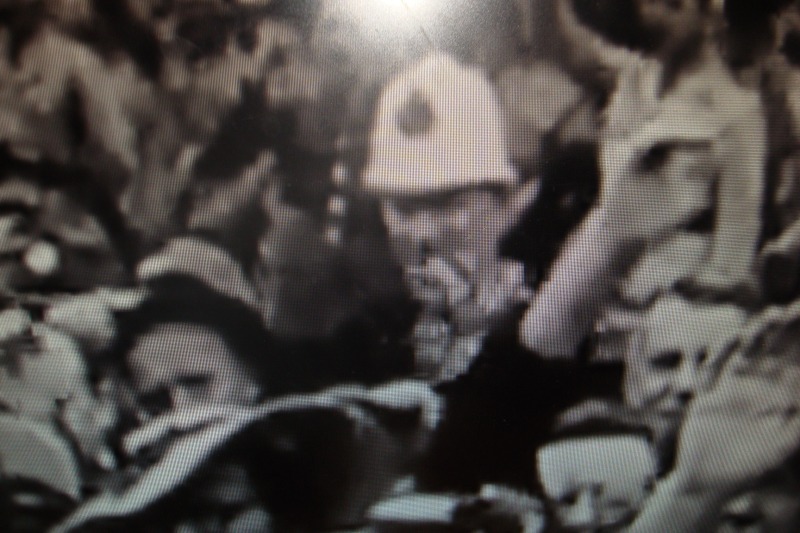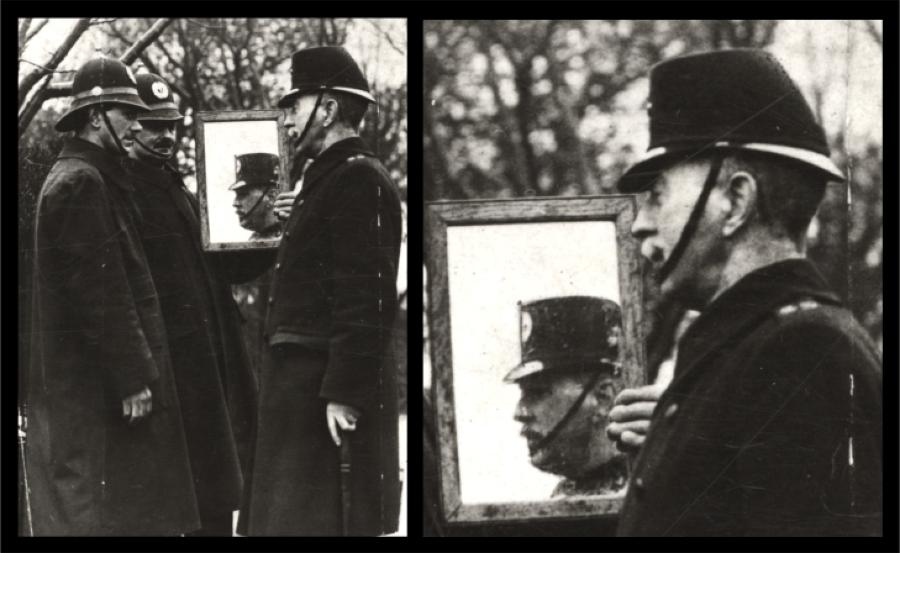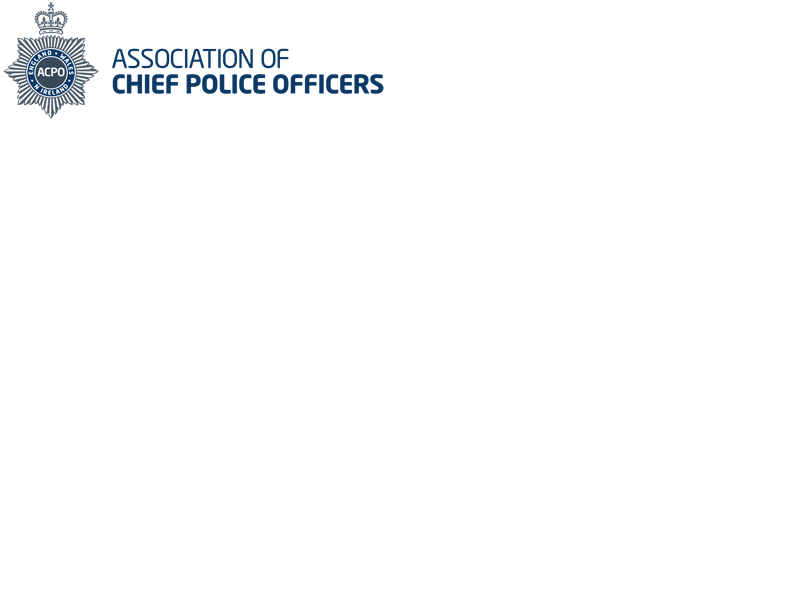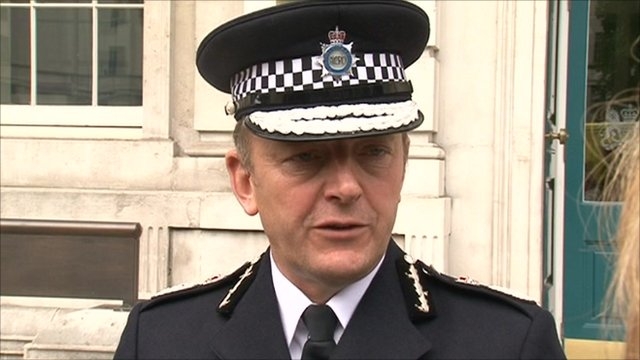
NickLangley
-
Posts
203 -
Joined
-
Last visited
Content Type
Profiles
Forums
Blogs
Gallery
Events
Store
Posts posted by NickLangley
-
-
This has got me flummoxed. One of the problems is another long shot appears to show men wearing white helmets but they could be Royal Marines in their dress uniforms. All the Met' constables, shown, are wearing steel helmets.
0 -
Here is the chap in question. Definitely not a Royal Marine.
 0
0 -
Yesterday the BBC reran a documentary about the sinking of the Graf Spee. Towards the end of the programme there was newsreel footage of the victory parade through the streets of London. What did catch my eye was what appears to be a Pc in the crowd who is wearing a white helmet. So does anyone have any any ideas?
http://www.bbc.co.uk...he_River_Plate/
The shot is at 41.40
0 -
What was the significance of the switch from POLITIE to POLISIE?
0 -
Brian:
Did Liverpool officers wear white gloves? In Nottingham they had thick woolen ones in the winter and cotton ones in the summer. You could always tell an old City officer post amalgamation, the gloves neatly folded over his belt when in shirt sleeve order.
0 -
Fred Scuttle in case you forgot
 0
0 -
It's always a pleasure to see photos where one of the old sweats is wearing his SD cap at a very jaunty military angle.
The Scottish pattern SD cap has always struck me as far smarter than the various English counterparts - some of which verge upon Fred Scuttle in their lack of style.
0 -
During the reign of George V individual forces had their own long service medals. If you know the which force the individual served with then there is a possibility that records may still exist. But I have to say that since the 1960s police forces have been notoriously bad at preserving their histories.
0 -
I seem to remember reading that the TASER acronym is based on the inventor's name with the ER standing for Electric Rifle.
0 -
I'm not convinced of any connexion between the town of Poole in Dorset and the Poole family from Cheshire. There is a Poole Hall and a settlement called Poole a couple of miles north west of Nantwich but that was never important enough to have a mayor, sheriff and town constable.
I would bet my bottom dollar that the regalia is from Poole, Dorset. It had a municipal corporation and therefor a mayor and it was also a county corporate with its own sheriff.
As for the constable's staff with the Prince of Wales feathers one thought is that it dates from the Regency when the Prince of Wales ruled as a proxy of George III.
0 -
As the mysterious borough in question had a sheriff it must have been a County Corporate.
0 -
Could these have been a "working" set of municipal regalia so that the more valuable versions could be kept locked safely away to be brought out on special occasions only?
0 -
Nick - have just noticed something very interesting on your Shako. I think it is an Inspector wearing this one. From the mirror you can see what looks like braid on the peak - and the epaulettes are not numbers - they look more like rank pips - but side by side and not one above the other.
OK that should get everyone looking - would make it very revolutionary - perhaps for Specials ? Also, he is carrying a stick - traditional in Midland Forces.
After a little research I can confirm that the officer wearing the shako was a sergeant in the Liverpool Parks Police. As for the cane, I have seen Merseyside Police sergeants carrying such an item so it may have been a traditional accoutrement for Liverpool sergeants and the tradition has continued to this day.
There is very good website about the "Toffs Police" with plenty of photos herehttp://www.liverpoolparkspolice.co.uk
0 -
Mervyn, you are absolutely dead-on. One of the dangers of finding a new picture without thinking. Incidentally Liverpool City was another force that wore straw helmets during the summer.
0 -
Here is an interesting photo from the 1930s. It shows three constables from the Liverpool Parks Police with one of them modelling an experimental style of helmet.
 0
0 -
There is one force in the UK where Inspectors' caps have silver rather than black cap braid for historic reasons.
As a mark of gratitude to those Liverpool City Police officers who did not strike in August 1919 the city's Watch Committee gave Constables commemorative truncheons; Sergeants received larger chevrons in silver wire, and Inspectors' caps were upgraded with silver braid. Merseyside Police continues this tradition to this day.
0 -
Well it looks as if the British Press is now taking an interest in Sir Hugh's made-up insignia and uniform.
 0
0 -
Spot on Brian.
Sir High Orde was previously the Chief Constable of the Police Service of Northern Ireland and is now the President of the Association of Chief Police Officers (ACPO).
ACPO is a rather strange organisation. Its membership is limited to the most senior ranks of the police forces in England, Wales and Northern Ireland and it acts rather like a Police General Staff. But, the odd thing is, it is constituted as a private limited company and is therefor exempt from the Freedom of Information Act with which governs public bodies.
Anyway, Sir Hugh has gone to the expense of having an ACPO cap badge made. His colleagues all wear their force's insignia so in that respect he is unique.
 0
0 -
A little quiz! What is unique about this (serving) Chief Constable's insignia?
 0
0 -
There is an awful lot of mythologising about the traditional British way of policing. Most of it dates from the 1940s and may have been a result of propaganda operations to contrast Britain with jackbooted totalitarian regimes.
In fact if you read newspaper accounts of disturbances, which are tiny compared with the current ones, the authorities were not slow to call in the military. During the Liverpool Police strike troops were deployed on the streets with orders to shoot looters, and they did. Newsreel footage of the General Strike shows armoured vehicles and machine gun nests on the streets of London in anticipation of trouble. This would be unthinkable to the current generation of politicians and senior police officers.
I will never forget the furore over equipping Met officers with shields for the first time. Well the truth was that it was not a first. Liverpool Police had received circular metal shields 60 years earlier and I know for a fact that Nottingham City Police acquired an illicit stock of colonial-style riot equipment in the aftermath of the 1958 race riot. The Home Office having forbidden the force from repeating its use of fire hoses to quell disturbances.
http://www.liverpoolcitypolice.co.uk/#/police-strike-gallery-1919/4552230405
0 -
Amongst serving officers Custodian has become shorthand for a police helmet; rather like Hoover and vacuum cleaner. If you asked the average man or woman in an English High Street what a police officer's Custodian is I'd venture to suggest that most would think it is another name for handcuffs. So - as traditionalist - I would call it a police helmet. No need for the Bobby either.
0 -
An awful lot of references to the "custodian" helmet.
Now I'm willing to be corrected: this was not the traditional name of the bobby's helmet but rather a name given to a moderately reinforced version issued to officers in the early 1980s as a half-hearted attempt at providing protection during riots. They could be recognized by their webbing chin straps, with some having an extremely flimsy detachable visor. They truly were a triumph of form over function.
0 -
Local government in the southern part of Staffordshire - The Black Country - was very, very complicated until the reviews of the early 1970s.
The county boroughs of Wolverhampton and Walsall were in Staffordshire but maintained their own police forces. The county boroughs of Smethwick and West Bromwich were policed by Staffordshire. The county borough of Dudley though surrounded by Staffordshire was actually an exclave of Worcestershire and had its own police force. Strangely Dudley Castle, in the centre of the town, was officially part of Staffordshire.
In the late 1960s the Wolverhampton, Walsall, and Dudley forces amalgamated along with the newly created county borough of Warley to create the West Midlands Constabulary. This merged with Birmingham City and Coventry and Warwickshire forces to create the West Midlands Police in 1974.
A little further north the county borough of Burton on Trent chose not to have its own police force and was always under the jurisdiction of the county.
0 -
The Staffordshire Police as we know it today (formally, Staffordshire and Stoke-on-Trent Constabulary) was formed on 1 April 1974 with the amalgamation of:
Stafford County Police
Borough of Newcastle under Lyme Police
City of Lichfield Police
Stoke on Trent City Police
and
The Staffordshire Constabulary.
It would be remiss to omit the Hanley Borough Police. This formed the nucleus of the Stoke on Trent County Borough Police when, in 1910, the town was created from the six Potteries towns of Hanley, Burslem, Longton, Fenton, Tunstall and Stoke upon Trent.
Stoke on Trent became a city in 1925.
0


British Police Helmet Plates and Cap Badges
in Great Britain: Mervyn Mitton's British & Colonial Police Forces
Posted
It would be interesting to know why Hampshire adopted - and retains - its unique style of helmet plate, given that modern police forces have an almost pathological aversion to the uniform idiosyncrasies that were the hallmarks of the old borough and county forces.